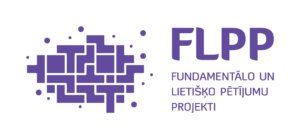PROJECT
Comprehensive Studies of Small Bodies in the Solar System (PLA)
Project No. lzp-2018/1-0401
Project acronym: PLA
Accounting acronym: z-K.Š
Funded by: Grant of the Latvian Council of Science
Project Submitter: University of Latvia, Institute of Astronomy (UL IA), cooperation partner – Ventspils University of Applied Sciences, Institute of Engineering Ventspils International Radio Astronomy Centre (VUAS IE VIRAC)
Scientific Supervisor of the Project: Ilgmārs Eglītis, Director of UL IA, research work of the project at VUAS IE VIRAC is coordinated by Leading Visiting Researcher Normunds Jēkabsons and Researcher Karina Šķirmante
Project Duration: 1/9/2018–31/8/2021 (36 months, 3 reporting periods)
Brief Qualitative description and Aim of the Project:
This is the first step in the cooperation of two leading astronomical institutes of Latvia in the field of planetary scientific research. The project envisages several activities related to observations of small bodies in the solar system (especially asteroids and comets) using three astronomical instruments unique in the Baltics – UL IA optical Schmidt telescope in Baldone and VUAS VIRAC radio telescopes RT32 and RT16 in Irbene. A total of 12 researchers are planned to be involved in the project, 5 of whom are representatives of VUAS VIRAC with experience in performing radio astronomical observations and processing and interpretation of the obtained data, as well as it is planned that the scientific group of the project will be supplemented by the leading researcher of the Radiophysical Research Institute based in Nizhny Novgorod Maria Nechhaeva, who has more than 50 scientific publications and competence in the project research directions.
The project has four research directions:
- Asteroid, comet and Near Earth Objects (NEO) monitoring using the Schmidt optical range telescope in Baldone; Asteroid and comet photometry research;
- Simultaneous execution of the observations of the hydrogen maser emitted by the comet (using radio telescopes in Irbene) with the observations of the brightness of the comet (using the Schmidt telescope in Baldone);
- Processing and interpretation of observational data.
Project goal:
To study the small bodies of the solar system (mainly with an emphasis on asteroids and comets) using modern optical and radio astronomy techniques and signal processing. The project is unique due to the combined use of optical and radio methods and the results and developed methods can be used in European Space Agency missions to monitor space probes and can be used in future research on water supply from planetary objects to Earth, space security programs and space exploration.
Project Funding: EUR 300,000.00, consisting of
LU IA Funding: EUR 163,500.00
VUAS IE VIRAC Funding: EUR 136,500.00
Contact Informatio:
Project Coordinator for Research Matters – Karina Šķirmante, karina.skirmante@venta.lv
Project Coordinator for Administrative Matters – Ieva Kozlova, ieva.kozlova@venta.lv



